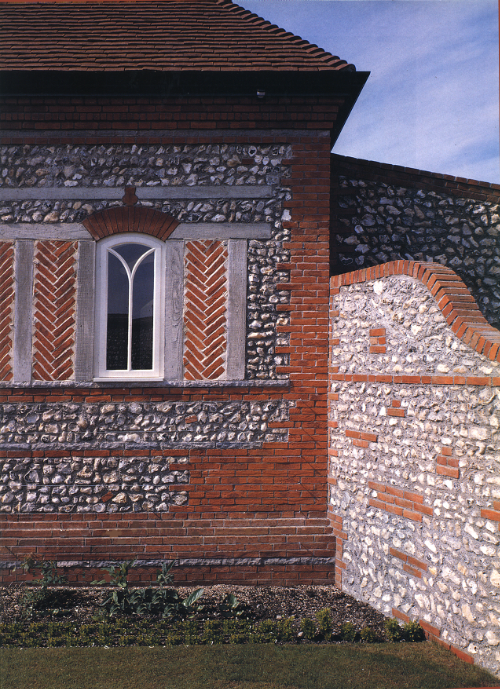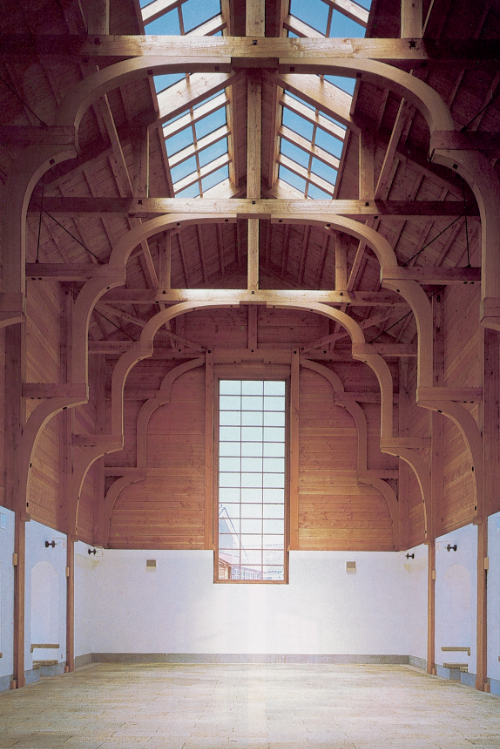System of ego
For many years, Christopher Alexander worked directly on building sites while also continuing to work as an architect. He learned the engineering skills and builder’s yard talents necessary to create with his own hands. He knew the materials better through this immersion. He worked with others to construct many buildings and worked with organisations large and small. He knew the interactions of those in the trade better through this process.
Alexander shared his knowledge as he formed the written works
Initially and in parallel, the architectural establishment praised him from their vantage. His new work created an opportunity for revolutionary techniques in planning buildings of many scales. His work on A Pattern Language was used directly in the planning and construction of many areas of the University of Oregon. And he founded the Center for Environmental Structure, to which most of his activities were linked.
The problems he saw in architecture reflected back on him as those invested in the status quo found him difficult to accept into their world. His theories began to break down barriers previously held to be impenetrable. Architecture had, before this point, been viewed as an art1. It required many years of study to become an architect who could put together a building expressing the values of its commissioner while maintaining the physical constraints of construction.
While the idea of creating a pattern language was novel and exciting to the architects of the time, the problems started when those from the establishment realised he had made something that was not built to support artistic visions2.
This is not to say Christopher Alexander’s buildings were purely functional—quite the contrary. However, anything produced using his methods would be something that used art to complete the form and bring harmony. Artwork and iconography were materials used, like wood and steel, to make a building more fully what it should be.
What is often called the “detail” of the building — its fine structure — is not some kind of icing on the cake, but its fine structure, the essence of what it is, and how it makes its impact upon us. The detailed pattern and ornament of which a building is made, is as much the essence of its structure, as the arrangement of sodium and chlorine atoms, is the essence of salt; or as the detailed arrangement of the amino acids is the essence of a human chromosome.
— Christopher Alexander,
A Foreshadowing of 21st Century Art [AFo21CA93], pp. 7–8.
Christopher Alexander did not think of ornamentation as something you add to a building but as a valuable, perhaps essential part of it. In effect, you might say his buildings used art, whereas for modern architects, their art used buildings.
The following three images are kindly provided by the Centre for Environmental Structure. Though they are all Christopher Alexander’s work, they are each different in detail because they use art and style to deeply resonate with their purpose. None of the art is for the sake of some statement, but instead to help complete the building.
— Christopher Alexander, The Center for Environmental Structure,
The Nature of Order, Book 2 [NoO2-02], p. 405.
The West Dean Visitor Centre (above) is a beautiful building constructed from both traditional and modern materials. The combination of bricks and flint is a style in keeping with local buildings and provides a sense of continuity. The overall design is unique to the project but seems emergent from the environment rather than an attempt to announce itself by contrast.
— Christopher Alexander, The Center for Environmental Structure,
The Nature of Order, Book 2 [NoO2-02], p. 429.
The wooden forms of the Eishin Campus include many works of beauty while also providing essential structural integrity.
— Christopher Alexander, The Center for Environmental Structure,
The Nature of Order, Book 2 [NoO2-02], p. 457.
Projects for families and individuals, such as the above, were developed to suit the needs of the homeowners and the land around them. Beauty was seen as a requirement during development, not something tacked on after.
Democratised development
This alone would have been enough, but it also appeared to give nothing to those who wanted to build to express themselves or create a physical manifestation of a statement. In the light of modern architecture, this was absurd and dangerous. The architectural establishment fought back by claiming Christopher Alexander was ‘anti-intellectual, naive, soft-headed, conservative, and uninterested in architecture as art’3. But beyond that, the threat went deeper. His work attacked their very values. It silently insinuated that the idea of an architect wanting to leave a mark and make an impression was itself, a foul goal. He was a massive proponent of an ego-free approach to construction4, believing ego was at the root of many of the most discordant buildings[NoO2-02][NoO3-05].
Architects had been brought up to believe their trade was all about making an impression, expressing something meaningful with the materials they had. Architecture was an engineering science, but the basis was artistic intent. When Christopher Alexander came along and claimed architecture was a job you should do to satisfy human needs, he implied their whole career was a sham—or conceivably worse, a destructive, wasteful distraction in the world.
Across architectural literature on Alexander, there was a tendency to talk about him in the past tense, as a curiosity, not a futurist. They would occasionally downplay his paradigm-shifting views as dreamy references to a time long gone and of no particular value in the modern world[NoO4-04]. In 1982, this bizarre reaction was used to create a bit of a performance in a staged debate[Debate82] at Harvard University between Christopher Alexander and Peter Eisenman.
At one point late in the debate, Christopher Alexander became angry at the idea of actually seeking out disharmony in architecture. He said:
Moneo intentionally wants to produce an effect of disharmony. Maybe even of incongruity. … I find that incomprehensible. I find it very irresponsible. I find it nutty. I feel sorry for the man. I also feel incredibly angry because he is fucking up the world.
— Christopher Alexander
For this, he is applauded, but the modern architect Peter Eisenman later said:
How does someone become so powerful if he is screwing up the world? I mean somebody is going to see through that …
— Peter Eisenman
This then led to further arguments before the debate came to an end.
For me, Eisenman’s belief that there would be consequences for making mistakes or causing problems was probably the root of many issues impeding Christopher Alexander. I suggest Eisenman’s belief in some inherent corrective justice was a quaint Victorian notion, to pre-use a phrase we shall encounter later.
I’m afraid I have to disagree with Eisenman on this point. I’m a child of the 90s, so I have seen plenty of evidence in my lifetime that people doing the wrong thing do not get pulled up for it if they work within the letter of the law. As a child, television taught me that bad people were punished, but in real life, I was taught people could get paid a lot more money if they did the wrong thing. What is at play here is a system that doesn’t just tolerate someone screwing up the world, but either doesn’t see it5 or possibly applauds it for testing the boundaries of artistic expression. The most salient point here is that mistakes are subjective. Something is sensing them and reacting—a system.
If you cause problems, you will only be noticed and blamed if they’re the kinds of problems that are obviously problems and you’re obviously wrong. There’s also the filter of these problems having to be problems for the people in power. There are many things people can do or ask people to do that can slow things down or increase waste, while on the surface, appearing to be very normal and acceptable or even the obviously correct action. In the case of Peter Eisenman and Moneo, they both have an institution-sized self-congratulating in-group supporting their egocentric approach to architecture. That’s a lot of people in power not seeing anything they would consider a problem paying these modern architects tribute for the damage they did.
However, we’re not institutionalised architects; we can think for ourselves and see through the faux intellectual arguments for the balance of harmony and disharmony. We can point out that balance is harmony, so introducing discord and disharmony to balance with harmony is like showing both sides of the climate debate. It’s disingenuous at best. It’s sneaky rhetoric with no real value other than maintaining the status quo—a world in which those who do damage are rewarded, not reprimanded.
I believe harmony is about striving for a form of invisibility. Ego is the opposite; thus ego is not harmonious.
Christopher Alexander was fighting a system that had emerged from traditional architecture but was no longer playing by the same rules. The new goals were no longer aligned with the people who used and inhabited the buildings. Instead, it worked for those who put up the capital to build them and those who needed the commissions. The system rejected the pattern language approach because that approach denied the architect their fame and provided no opportunity for the client to flaunt their wealth.
This system and its response are mirrored in many structures of authority. The software pattern movement suffered a similar fate. I’m convinced that each year, at least one organisation suffers the same rejection of progress. You need to understand systems theory to fight against such processes. In this case, ego and authority used qualification and accreditation to protect those who would have suffered most under a revolution in architectural thinking.
Evidenced in a book review of
In John Gall’s
[Grabow83] p. 30.
[Grabow83] p. 178.


